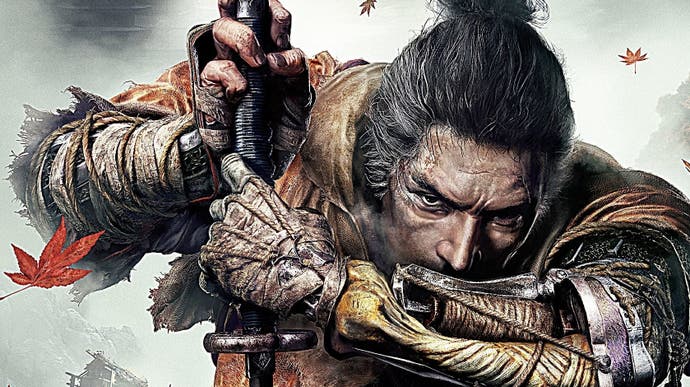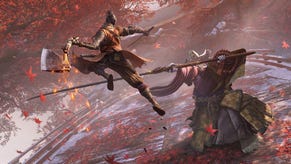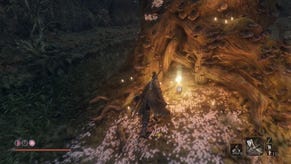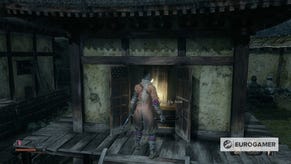Sekiro: Shadows Die Twice analysis - the Dark Souls engine evolved?
DF focuses on the tech powering the PS4 Pro version.
One of the best things about From Software's Sekiro: Shadows Die Twice is it's at once familiar and yet also unique. Indeed only four years ago, the same developer achieved a similar feat with Bloodborne, taking the skeleton of the Dark Souls series and combining a bleak gothic setting with a revised combat system. Sekiro takes just as ambitious a leap of its own - and from what I've seen, it deserves to be celebrated on its own terms. The developer taps into a rich vein of mythology much closer to home here. A gorgeous Japanese-inspired world is sculpted from scratch, of shinobi, burning temples, and feuding clans - with a huge level of care and attention. In terms of the sheer quality of art direction, the results are unlike anything we've seen from the studio.
Cutscenes are used to tell parts of its story, but as ever, the world design steals the show. From the snowy paths lined with samurai, to a mountain-side temple set ablaze, every spot is distinct. Certainly, from a technical standpoint, it's obvious that the engine has overlap with Dark Souls 3 and Bloodborne. Parts of its setup - even the habits of PS4 Pro performance - are highly familiar in Sekiro. The mechanics also have common ground: the Estus Flask, the Maiden in Black, and many other touchstones of the Souls series find an equivalent here. Even so, developer From Software's push into new territory still makes it compelling. There's a commitment to its world-building, which even with a similar technical backbone, takes Sekiro down a path all of its own.
From the opening two hours I played on PS4 Pro, I loved it, though Souls veterans expecting to jump right in will have to accommodate the many changes From has introduced. The biggest difference? In Sekiro, a single, striking blow from a katana is significant moment - a crunching, pinpoint strike that rewards a bout of cautious side-steps and parries, where you have to work to find that opening. The environments are sparser than From's other works too. Every area's verticality comes into play thanks to a jump button and a grappling hook, while stealth is encouraged by crouching through tall grass - if you'd prefer taking that route.
What does this mean technically? Well, it puts From Software's engine to task with rendering wider, more navigable environments. They stretch out in all directions - from the arching tree branches flanking a mountainside, to the rows of slatted rooftops, it's a playground waiting to be explored. The grappling hook ups the pace of movement too. It forces the game to stream in world detail far ahead of time, much faster than any Souls game. Latch on to several points in a sequence, and you zip across string of trees quickly, and with barely any sight of pop-in. The options are there. The hardware's up to the task, and it combines to give an incredible level of freedom.
Regardless, we're in familiar territory engine-wise, which does help. The technical deign, from the way each environment streams in, to the physics interplay on clothing, or tumbling stacks of books or smashable urns - have a clear likeness to earlier From titles. Specifically, the ragdoll physics on enemies cut off just after landing a fatal blow, much like Bloodborne. Even the snappy input to your character, with a similar stepping animation, puts you in a similar headspace. Many of the engine's strengths carry straight over to Sekiro in this respect. Again, it's only a comforting baseline to work from, and the actual innovation springs from that.
Sekiro strikes out with its own visual identity, with some excellent effects work. A satisfying explosion of alpha spews from enemies on landing a final strike, a burst that's punctuated in close-up. The fire of the later Hirata Estate area also use sharp, high resolution transparency effects at great scale. While it's duplicated many times over, the alpha blends convincingly with the scene thanks to bloom, light bounce across characters, and reflections across water. Easily, this is one of the standout events of the game's early hours. For quieter moments, there's a crepuscular ray effect that flickers, subtly, through trees at night too. All these are known features of From Software's engine. They're tools in the box, but used in a fresh new way to help realise Sekiro's world.
The gothic vision of Bloodborne is axed for a different aesthetic, and so this time chromatic aberration is disabled. As a post-process effect, the distortion it added to the screen edge was heavy-handed - deliberately so - and it still divides opinion. This time? Sekiro's image is clean and clear. What you get from its post pipeline is instead a pure focus on decent anti-aliasing, and quality motion blur. High-grade sampling is used to blend frames, not just for camera movement, but also individual objects. The result is artefact free, on PS4 Pro at least. We'll see how it scales to other consoles in due course, but I see very little in the way of dithering or banding on edges. It looks great - and helps to disguise the variability of its frame-rate. We played the game in a 1080p mode very similar to Dark Souls 3's PS4 Pro patch, where the action runs unlocked, typically from 40fps to 60fps, with alpha-heavy scenes taking us down into the 30s.
Speaking on image quality? Here's the curious thing. You think of PS4 Pro and you assume 4K output is on the cards. We played Sekiro at a press event where only 1080p capture was available, and so you're looking at a native 1920x1080 image in our assets here. To what extent From Software embraces higher resolution output remains to be seen, but the extent of the firm's work on the enhanced console essentially comes down to a Dark Souls 3 patch that unlocked the frame-rate, much like Sekiro's presentation here. Our fingers are crossed for something more ambitious for the game's launch, especially as this will be the first game from director Miyazaki and his team to launch with Pro and X hardware in the wild.
Based on a couple of hours from the beginning of the game, we're quietly excited and optimistic about what's to come. From Software knows how to build a world, lore, and characters from the ground up, and based on what I've played so far, the team's managed it all over again. There's a bigger emphasis on more linear, conventional storytelling this time, but as a counterweight, the environments are more sprawling than ever before, making it more of a pure-blooded stealth-action game - with new demands on its tech. If Bloodborne showed From Software's ambition at this generation's start, Sekiro stands to be in to an amazing counterpart bookend it. Sekiro: Shadows Die Twice launches on PlayStation, Xbox and PC platforms on March 22nd.











